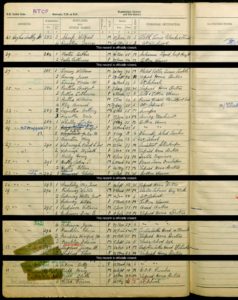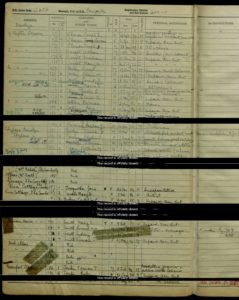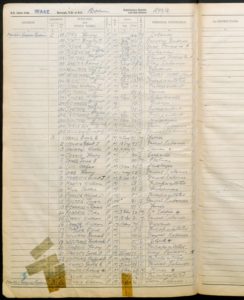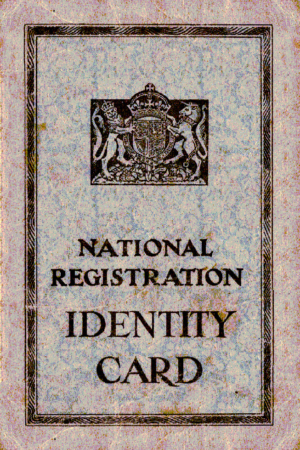Perhaps the best thing about the 1939 Register is that it is one of the very few documents which records an ancestor’s full date of birth. With this vital information, a genealogist can often confirm or deny family connections, especially for individuals who carry common forenames and surnames.
Scroll down to see some of our Tregurtha ancestors recorded in the 1939 Register.
- What is the 1939 Register?
The 1939 Register provides a snapshot of the civilian population of England and Wales just after the outbreak of the Second World War.
As the 1931 census for England and Wales was destroyed by fire during the Second World War and no census was taken in 1941, the Register provides the most complete survey of the population of England and Wales between 1921 and 1951, making it an invaluable resource for family, social and local historians.
- When and why the Register was compiled
The 1939 Register was taken on 29 September 1939. The information was used to produce identity cards and, once rationing was introduced in January 1940, to issue ration books. Information in the Register was also used to administer conscription and the direction of labour, and to monitor and control the movement of the population caused by military mobilisation and mass evacuation.
- What and who the Register records
The 1939 Register was designed to capture the details of every member of the civilian population on a specific date – military personnel were not recorded (see below for more information on who was and wasn’t recorded). It contains details of around 40 million people, recorded in more than 65,000 volumes (transcript books).
While the 1939 Register is not a census, it is arranged along similar lines and includes similar, if less detailed, information. It does, however, show exact dates of birth where census returns simply give a person’s age.
The civilian population
These records do include the civilian populations of:
- England
- Wales
These records do not include the civilian populations of:
- the Channel Islands
- the Isle of Man
- Scotland (for information relating to records of individuals in Scotland at the time of the 1939 Register please contact National Records of Scotland)
- Northern Ireland (for information relating to records of individuals in Northern Ireland at the time of 1939 Register please contact Public Record Office of Northern Ireland)
Exceptions and anomalies among armed forces personnel
Registration of members of the armed forces was dealt with by the military authorities, so the 1939 Register does not include service personnel in military, naval and air force establishments. Nor does it include members of the armed forces billeted in private homes, including their own homes. However, since conscription did not begin in earnest until January 1940, most people who subsequently served in the armed forces during the Second World War were still civilians in September 1939.
The records do include
- members of the armed forces on leave
- civilians on military bases
The information recorded for each individual
For each individual the following details are included:
- address
- schedule number
- sub number
- surname
- first name(s)
- role (for institutions only – Officer, Visitor, Servant, Patient, Inmate)
- gender
- date of birth
- marital status
- occupation
Learn more about remuneration districts here.
Below: Anthony (born 11 Feb 1915) and wife Doris living in Accrington, Lancashire. Anthony was working as a sweeper, and Doris was a machinist.
Below: Jane Tregurtha, born 23 Jan 1854, living at Vine Cottage, The Combe, in Newlyn, Cornwall.
Below: Nicholas Tregurtha, born 14 Dec 1884, as a patient in the Bodmin Mental Asylum, Cornwall.



